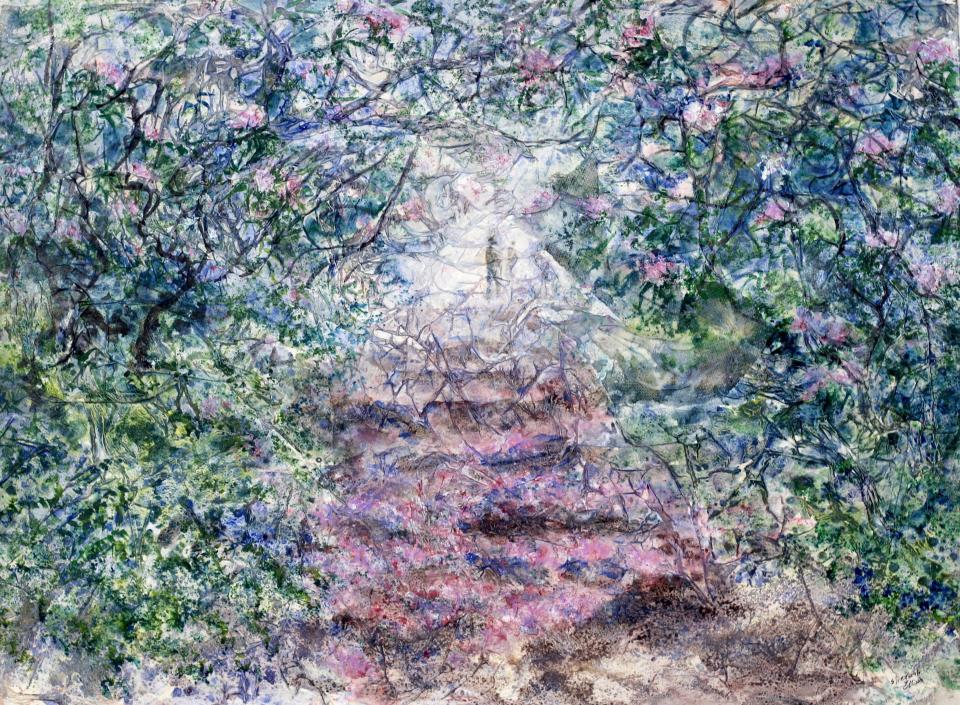Nature Journal: Rhododendrons displaying blooms across mountains
It seems that the true rhododendrons here in the southern mountains are displaying their white, pink, rose-purple, and magenta flowers earlier and more profusely this year. By "true rhododendrons" I mean those shrubs in the "Rhododendron" genus.
Genus that are evergreen, as opposed to those that are deciduous.
The deciduous members of the genus are the ones we commonly call azaleas. The scientific name for flame azalea, for instance, is "Rhododendron calendulaceum." In addition to losing their leaves in the fall, the azalea group differs from the true rhododendrons in that the corolla tubes at the base of their flowers are longer and they usually have five rather than 10 stamens.

Curiously enough, pinkshell azalea (R. vaseyi) produces seven stamens.
Rosebay rhododendron (R. major) is the most common of our evergreen rhododendrons. It grows as a straggly bush or small tree along low elevation stream banks and in woodlands into the higher elevations. (But it's mostly encountered below 4,000 or so feet.) The peak blooming season is from late May into early June. The flowers are white or pinkish-white. The leaves (6-12 inches long) are broadest above the middle and are rather sharp-pointed.
More from Nature Journal: Great crested flycatchers return after being absent for many years
Catawba or purple rhododendron (R. catawbiense) is the most showy of the evergreen rhododendrons. It usually grows as a compact shrub on rocky slopes, ridges, and balds above 3,000 feet in elevation. Breathtaking displays of the rose-purple flowers can be observed from mid-June into early July at Craggy Gardens along the Blue Ridge Parkway, at Roan Mountain, and at various points in the Great Smoky Mountains National Park. The Alum Cave Bluffs trail in the national park penetrates a heath bald comprised mainly of this species. After a light rainfall, the delicate petals literally carpet the ground so that one seems to have entered Shangrila. The leaves (4-6 inches long) are widest toward the middle with rounded tips.
More from George Ellison: Nature Journal: The beauty of bird nests
Carolina rhododendron (R. minus) is the evergreen rhododendron with which readers are perhaps least familiar. The flowers are magenta colored. This straggling, upright shrub grows in the higher elevations with its Catawba cousin and in the lower elevations with its rosebay cousin. Look for very short rough leaves with conspicuous brown scales on the undersides. Old-time nurserymen in WNC knew this species as “punctatum,” one of the early species names assigned to the shrub by Asa Gray, America’s first great academic botanist.
All of the true rhododendrons display yellow or green spots on their uppermost petal. These function as nectar guides for the bumblebees, sphinx moths, and other insects that pollinate the plants. It's probable that the spots are iridescent in the eyes of these insects and literally serve as beacon lights.

George Ellison is an award-winning naturalist and writer. His wife, Elizabeth Ellison, is a painter and illustrator who has a gallery studio at 155 Main St., Bryson City. Contact them at info@georgeellison.com or info@elizabethellisongallery.com or write to 3880 Balltown Road, Bryson City, NC 28713.
This article originally appeared on Asheville Citizen Times: Nature Journal: Rhododendrons display blooms across mountains

